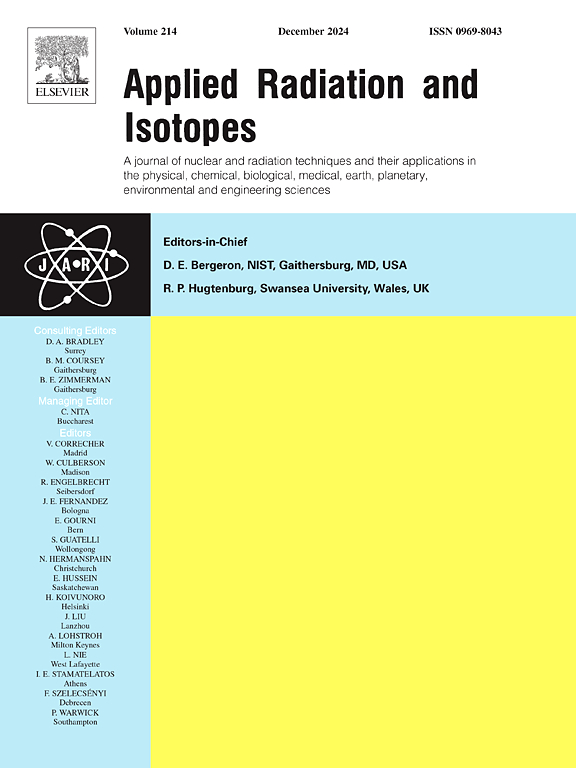A GATE Monte Carlo study on ICRP110 phantoms for BNCT dosimetry evaluation
IF 1.6
3区 工程技术
Q3 CHEMISTRY, INORGANIC & NUCLEAR
引用次数: 0
Abstract
Boron Neutron Capture Therapy (BNCT) is attracting renewed attention due to advancements in compact proton accelerators for the production of neutron beams, and new BNCT facilities are being planned all around the world. A key aspect in BNCT treatments will be patient dosimetry, particularly given the complex radiation field created by neutron interactions with biological tissues. This study aimed at developing a prototype of BNCT dosimetry workflow based on Monte Carlo (MC) simulations for the GATE toolkit. Investigating the feasibility of performing voxel-level dosimetry through full MC transport in terms of simulation time and statistical uncertainties, the ICRP110 male and female adult voxelized phantoms were used to model the human body, adding the possibility to set in their organs user-defined concentrations of 10B. Irradiation simulations of the head district with two monoenergetic neutron beams and with a realistic clinical neutron spectrum were carried out. The absorbed dose matrices for each simulation, assuming both no 10B and then a systemic distribution of 15 ppm, were scored separating the contributions from 7Li, alpha particles, protons and photons. Results showed the expected increase, in presence of 10B distribution, of the 7Li and alpha average dose components in organs of interest of the head, such as brain, reaching in it about 1.3 and 2.3 fGy/evt, respectively, in presence of 15 ppm of 10B. The present prototype of dosimetric workflow, whose macros and files are freely shared for interested users and developers, will serve as a basis for future studies aiming at simulating similar BNCT scenarios with larger statistics, for example by exploiting high computing resources, to verify the obtained results with lower statistical uncertainties and possibly optimize the workflow to reduce simulation times while ensuring suitable dosimetric accuracy.
求助全文
约1分钟内获得全文
求助全文
来源期刊

Applied Radiation and Isotopes
工程技术-核科学技术
CiteScore
3.00
自引率
12.50%
发文量
406
审稿时长
13.5 months
期刊介绍:
Applied Radiation and Isotopes provides a high quality medium for the publication of substantial, original and scientific and technological papers on the development and peaceful application of nuclear, radiation and radionuclide techniques in chemistry, physics, biochemistry, biology, medicine, security, engineering and in the earth, planetary and environmental sciences, all including dosimetry. Nuclear techniques are defined in the broadest sense and both experimental and theoretical papers are welcome. They include the development and use of α- and β-particles, X-rays and γ-rays, neutrons and other nuclear particles and radiations from all sources, including radionuclides, synchrotron sources, cyclotrons and reactors and from the natural environment.
The journal aims to publish papers with significance to an international audience, containing substantial novelty and scientific impact. The Editors reserve the rights to reject, with or without external review, papers that do not meet these criteria.
Papers dealing with radiation processing, i.e., where radiation is used to bring about a biological, chemical or physical change in a material, should be directed to our sister journal Radiation Physics and Chemistry.
 求助内容:
求助内容: 应助结果提醒方式:
应助结果提醒方式:


